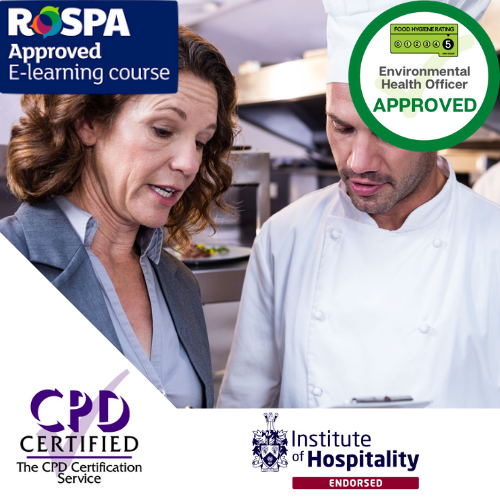The BRCGS Food Safety Standard is an essential part of the food industry today. Providing businesses with an internationally recognised certification for their food safety processes. However, obtaining this certification can be a daunting process for those new to it. This blog post aims to simplify the process of becoming certified by BRCGS, providing insight into the steps needed to achieve successful certification and how to resolve any potential food safety issues.
First published in 1998, the BRCGS Food Safety standard helps food manufacturers focus on a wide range of areas including
- HACCP
- Traceability
- Food fraud prevention
- Management commitment
- Food safety culture.
- Unannounced audits provide added confidence to the consumer.
What is BRCGS Food Safety Certification?
BRCGS Food Safety is a GFSI certification that ensures food safety in the food industry. It sets out the requirements for food safety management systems, focusing on areas such as hazard analysis, risk assessment, and quality management. This standard provides a framework for businesses to establish and maintain safe practices throughout their entire supply chain, from farm to fork.
To achieve BRCGS certification, companies must adhere to a rigorous certification process that includes internal audits, gap analysis, and corrective actions. The Food Safety Team, consisting of knowledgeable and experienced individuals within the organisation, plays a crucial role in implementing and maintaining the BRCGS standard.
One of the key differences between BRCGS and other standards, such as ISO 22000, is the focus on auditing criteria. BRCGS places a greater emphasis on verifying compliance with specific industry requirements, making it a more comprehensive certification for food safety.
Steps to implementing BRCGS
Implementing BRCGS Food Safety in your business requires careful planning and execution. Here are the key steps to follow to ensure successful certification:
- Familiarise yourself with the BRCGS standards: Start by thoroughly understanding the requirements and expectations set by BRCGS Food Safety. Review the standard documentation and familiarise yourself with the key concepts, such as hazard analysis, risk assessment, and quality management.
- Form a Food Safety Team: Assemble a dedicated team of knowledgeable and experienced individuals within your organisation. This team will play a crucial role in implementing and maintaining the BRCGS standard. Assign specific roles and responsibilities to team members to ensure a smooth certification process.
- Conduct a gap analysis: Perform a comprehensive gap analysis to identify areas where your current food safety management systems fall short of meeting BRCGS requirements. This analysis will help you prioritise the actions needed to close the gaps and ensure compliance.
- Implement corrective actions: Address the gaps identified during the gap analysis by implementing appropriate corrective actions. This may involve updating procedures, training staff, or investing in new equipment. Ensure that the corrective actions are documented and tracked for future reference.
- Prepare for the audit: As the certification process involves an external audit, it is essential to be prepared. Conduct regular internal audits to evaluate the effectiveness of your food safety management systems. This will help identify any potential issues or non-compliances before the actual audit takes place.
- The audit process and what to expect: During the audit, the certification body will assess your compliance with the BRCGS standards. Expect the auditor to review documentation, conduct interviews, and observe your processes. Be prepared to provide evidence of your compliance and demonstrate your commitment to food safety.
- Post-audit actions and maintaining certification: After the audit, address any non-compliances identified by the auditor promptly. Make the necessary changes to ensure ongoing compliance. Maintain a system of continuous improvement through regular internal auditing and periodic review of your food safety management systems.
Conducting a gap analysis
When it comes to implementing BRCGS conducting a thorough gap analysis is a crucial step. This analysis allows you to identify areas where your current food safety management systems may fall short of meeting BRCGS requirements. By understanding these gaps, you can prioritise the necessary actions to ensure compliance and successful certification.
To conduct a gap analysis, start by reviewing the BRCGS standards and documentation to familiarise yourself with the specific requirements. Next, assess your current food safety practices, procedures, and systems against these standards. Look for any discrepancies or areas that may not align with BRCGS requirements.
It is essential to involve your Food Safety Team, a group of knowledgeable and experienced individuals within your organisation, in this process. Their expertise can help identify gaps and provide insights on how to address them effectively. Assign specific roles and responsibilities to team members to ensure a smooth and coordinated analysis.
Once you have identified the gaps, it’s time to implement corrective actions. This may involve updating procedures, training staff, or investing in new equipment. Document each corrective action and track its progress to ensure ongoing compliance.
Implementing corrective actions
Now that you have conducted a comprehensive gap analysis and identified areas. It’s time to implement corrective actions. This crucial step involves addressing the gaps and making the necessary changes to ensure compliance and successful certification.
Start by prioritising the corrective actions based on their impact on food safety and compliance. This may involve updating procedures, training staff, or investing in new equipment. Assign responsibility for each action to the appropriate team member and establish clear timelines for completion.
It is important to document each corrective action and track its progress. This will not only help ensure that all actions are completed but also provide evidence of your commitment to food safety excellence. Regularly review the progress of the corrective actions and make any necessary adjustments along the way.
In addition, consider the feedback and insights from your Food Safety Team. Their expertise can be invaluable in identifying the most effective solutions to address the gaps and improve your food safety practices.
Remember, implementing corrective actions is an ongoing process. Continuous improvement is key to maintaining BRCGS certification. Regular internal audits, conducted by your Food Safety Team, can help identify any new gaps and ensure that your food safety management systems are always up to date and in compliance with BRCGS audit criteria.
BRCGS Audit – Prep
Preparing for the BRCGS audit is a crucial step in the certification process. By adequately preparing, you can ensure a smooth and successful audit experience. Here are some essential tips to help you get ready for the audit.
Firstly, make sure you have a clear understanding of the BRCGS audit criteria. Familiarise yourself with the requirements and expectations set by the standard. Review the documentation and guidelines provided by BRCGS to ensure you have a thorough understanding of what will be assessed during the audit.
Next, conduct regular internal audits to evaluate the effectiveness of your food safety management systems. This will help you identify any potential issues or non-compliances before the actual audit takes place. By conducting internal audits, you can proactively address any gaps or deficiencies and make the necessary improvements to ensure compliance with BRCGS standards.
Furthermore, prepare your Food Safety Team for the audit. Ensure that team members are aware of their roles and responsibilities during the audit and are well-prepared to provide the necessary information and evidence of compliance. Their knowledge and expertise will be vital during the audit process.
Lastly, stay up to date with the latest food safety regulations and industry best practices. Continuously monitor and improve your food safety management systems to ensure ongoing compliance with BRCGS standards.
The audit process and what to expect
Once you have prepared your food industry business for the BRCGS audit, it’s time for the audit process itself. This is an important step towards achieving BRCGS certification and ensuring the highest standards of food safety within your organisation.
During the audit, a certified BRCGS Auditor will assess your compliance with the BRCGS standards. The auditor will review your documentation, conduct interviews with key personnel, and observe your processes in action. It is essential to be well-prepared for this process to ensure a smooth and successful audit.
Expect the auditor to focus on verifying compliance with specific industry requirements outlined in the BRCGS audit criteria. This differs from other standards, such as ISO 22000, which have a broader focus on food safety management systems. The BRCGS audit criteria are designed to provide a more comprehensive evaluation of your food safety practices, ensuring they align with industry-specific requirements.
During the audit, be prepared to provide evidence of your compliance and demonstrate your commitment to food safety. The Food Safety Team, which plays a crucial role in implementing and maintaining the BRCGS standard, will be essential during the audit process. Their knowledge and expertise will help answer any questions and provide the necessary information to the auditor.
After the audit, the auditor will provide you with a report detailing any non-compliance or areas for improvement. It is important to address these issues promptly and implement the necessary changes to ensure ongoing compliance. Regular internal auditing, conducted by your Food Safety Team, will help identify and address any potential issues before the next audit.
Post-audit actions and maintaining BRCGS certification
After completing the BRCGS audit and achieving certification, there are several important post-audit actions that must be taken to ensure the ongoing maintenance of BRCGS certification.
Firstly, it is essential to address any non-compliances or areas for improvement identified by the auditor during the audit. These issues should be promptly addressed and the necessary changes implemented to ensure ongoing compliance with BRCGS standards. Regular internal auditing, conducted by the Food Safety Team, can help identify and address any potential issues before the next audit.
Internal auditing is an essential part of maintaining BRCGS certification. Regular internal audits, conducted by the Food Safety Team, help evaluate the effectiveness of food safety management systems and identify any gaps or deficiencies.













Pingback: 10 Unique Ideas for Exhibiting World Food Day Topics - Food Tech Safety
Pingback: HACCP Team Members - Roles & Responsibilities - Food Tech Safety
Pingback: Certifications important for Food Safety Officer - Food Tech Safety